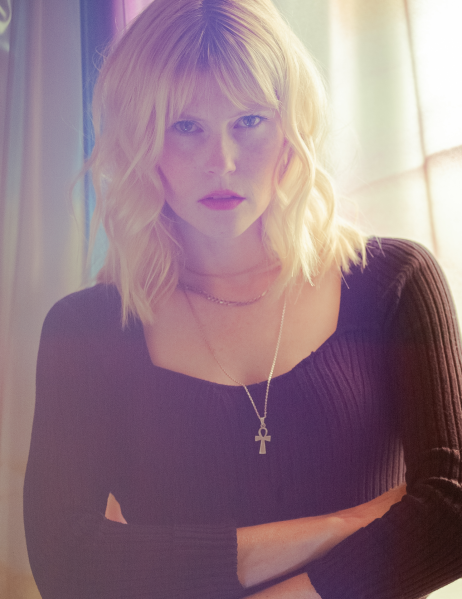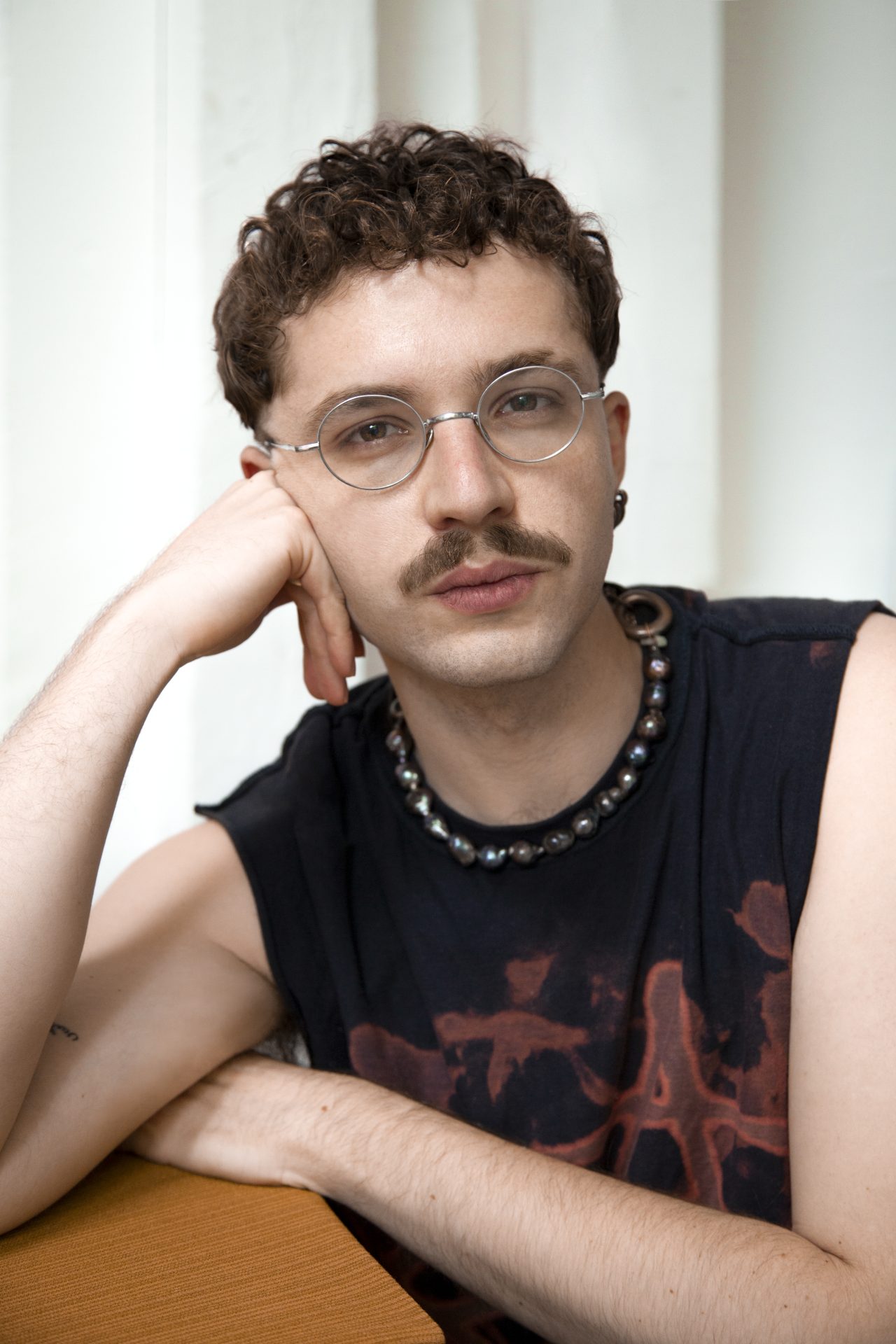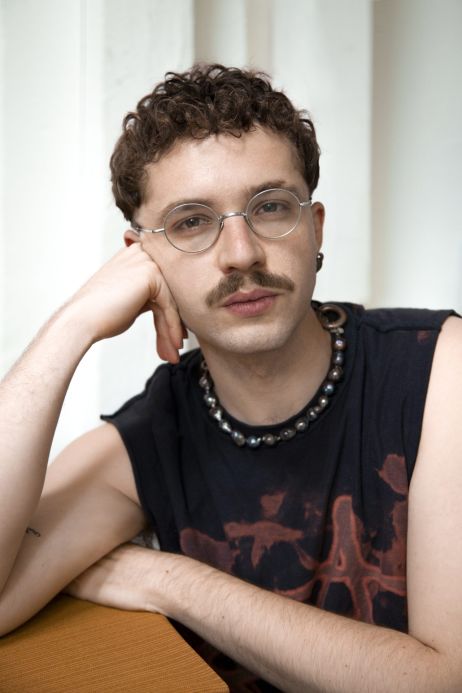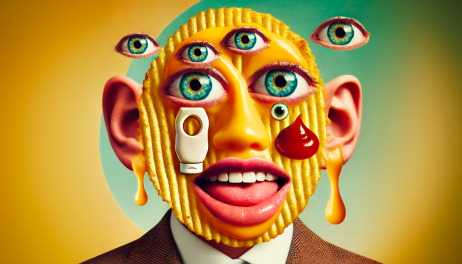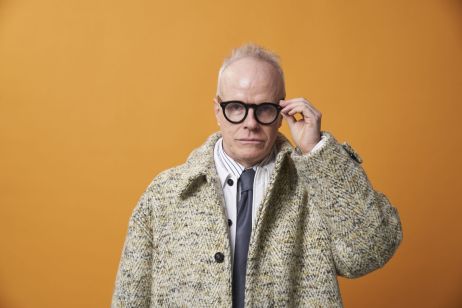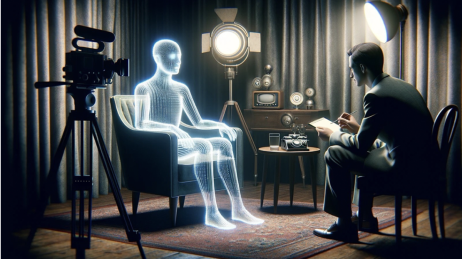Between folk tales and transmedia narration, Corentin Darré’s universe unfolds at the crossroads of myths and virtual forms. Through his sculptures, which resemble digitalassets and stories in which queer reintegrates mythological out-of-time, the artist captivates as much by his singular aesthetic as by his ability to tell.
We may know them to be fake, we may bear in mind that they’ve been fashioned from scratch, and that all we need to do is take a few steps to discover their backstage and shatter their illusions, but theater sets, funfair attractions and videogame architectures are nonetheless formidable narrative tools, capable of transporting their visitors and generating emotions. Corentin Darré is well aware of this, to the point of using this efficiency to create his own stories.
Graduated from the École Nationale Supérieure des Arts de Paris-Cergy in 2020 and exhibited at several prestigious institutions (Palais de Tokyo, Lafayette AnticipationsFrac Île-de- France, where a monumental façade by the artist has just been added to the collections, etc.), Corentin Darré is making his way along the path of contemporary art, sowing little stories with the air of popular tales and sculptures with a very virtual plasticity. Recently exhibited at the sissi club gallery in Marseille, the artist presented ChagrinIn this solo show, viewers were invited to discover the story of Henry and Raphaël, two star-crossed lovers set against a backdrop of westerns and ecocidal curses. Interviewed for this exhibition, the artist agreed to share five inspirations that influence both the content of his stories and the way he shapes them.
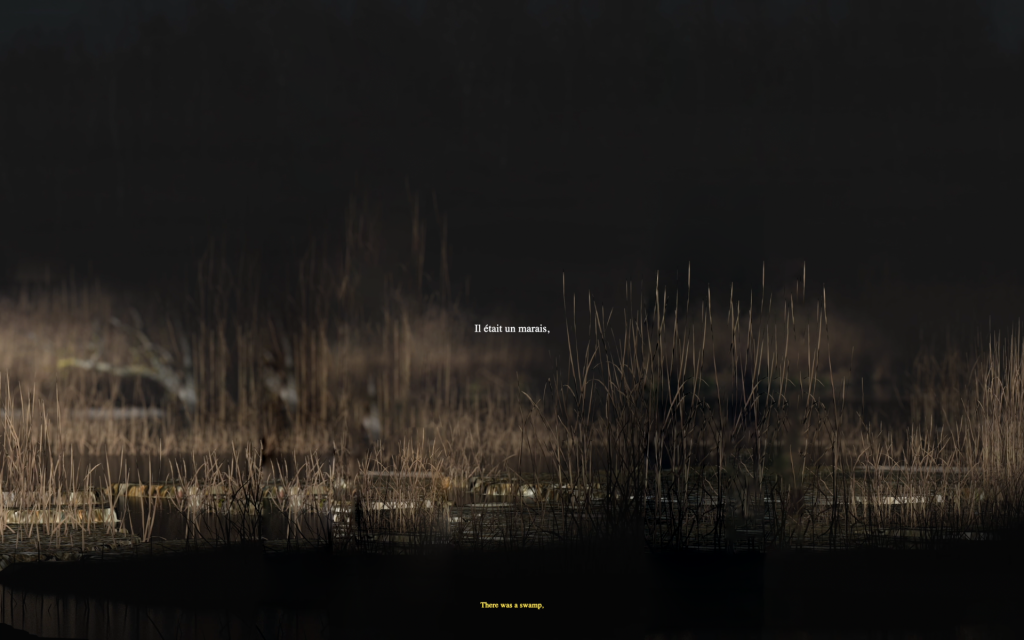
Folk tales and legends
“I’ve always been fascinated by fairy tales. They carry with them a timeless force, but they also have the ability to adapt to the times. They also have an etiological role, in that they explain the origins of things, fears and injustices. Growing up, I realized the extent to which dominant narratives crush and marginalize certain identities. That’s why I wanted to return to this narrative form: to fill in the gaps and silences, and offer stories where queer and otherness finally have their place. By reinvesting these narratives, I can change the prism, tell the story from the point of view of the monster, the marginalized, and reveal what has been erased or obscured.
The narrative form also allows me to immerse myself in territories and their folklore, exploring local narratives or imaginaries specific to these spaces. This provides a familiar entry point for visitors, enabling those who are not connoisseurs of contemporary art to enter my works through these shared cultural references.”
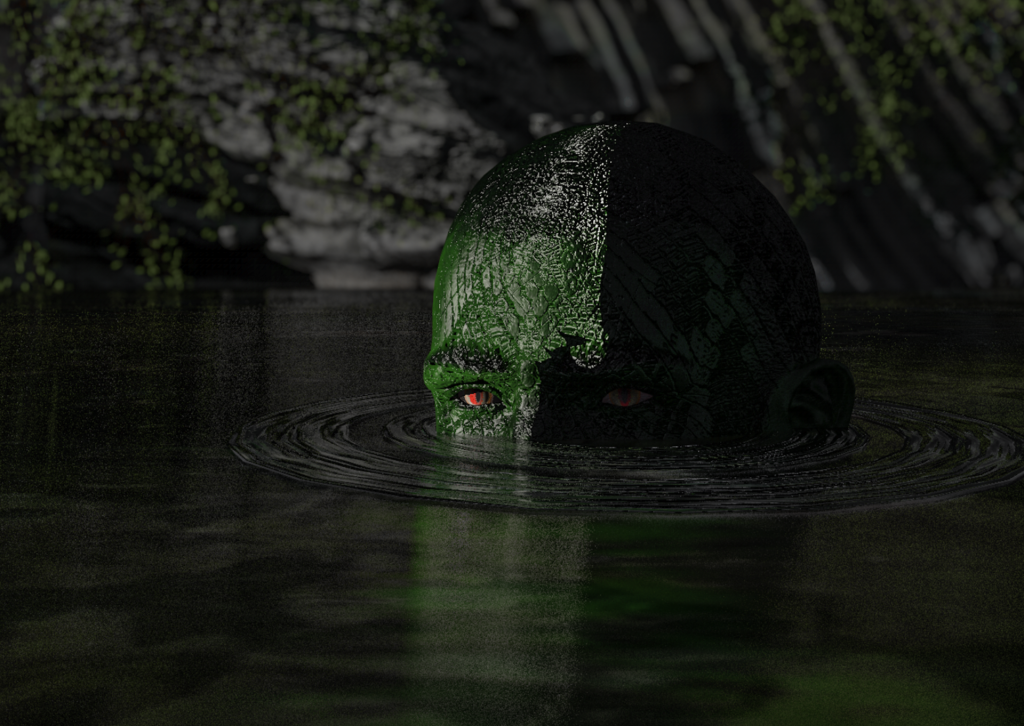
Fringe characters and monsters
“I grew up in the countryside, with no reference figure to identify me as a young homosexual. The first time I saw two men loving each other in a film was in Brokeback Mountain. I love that film deeply, but it also confronted me with a scheme in which the homosexual couple can only be happy on the condition of secrecy. In a way, I felt on the margins myself, out of step with my environment, without a model that could have helped me project myself differently.
I was interested in these two archetypal figures – the marginalized and the monsters – and how they evolve within the stories. Often isolated, perceived as threats or anomalies, they share a common origin insofar as they are shaped by the gaze of others, by a society that projects its fears, norms and prohibitions onto them. Working with them, I’ve come to understand the extent to which these figures tell the story not only of expulsion, but also of how this exclusion can be transformed into a form of resistance. My monsters are not villains, but alternative figures who bear the stigma of normative and social violence. Through them, I seek to explore otherness as a force, not a condemnation.”
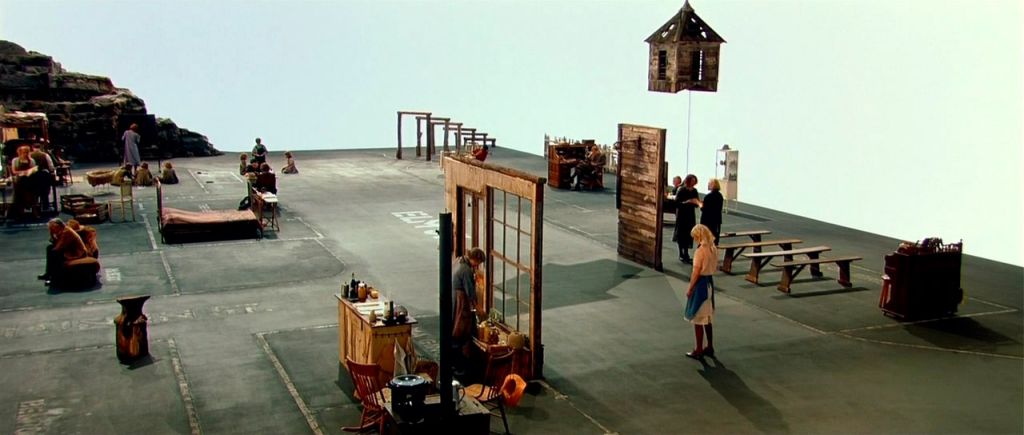
Film and theater sets
“I recently rediscovered Lars von Trier’s Dogville, and this film became a central visual reference for my latest exhibition. The set consists of a few elements and a few marked lines on the floor. Everything is suggested, nothing is shown directly, and everything is done to encourage viewers to imagine what’s missing. I find this experience very similar to certain video games, where environments are fragmented and uncluttered, and every visual detail has a precise role to play – as in Journey or Inside, for example. There’s nothing unnecessary, nothing too much. I draw inspiration from this in my work. The objects, textures and clues I place function like pieces of a puzzle. It’s up to viewers to get involved, to mentally recompose and interpret what they see.”
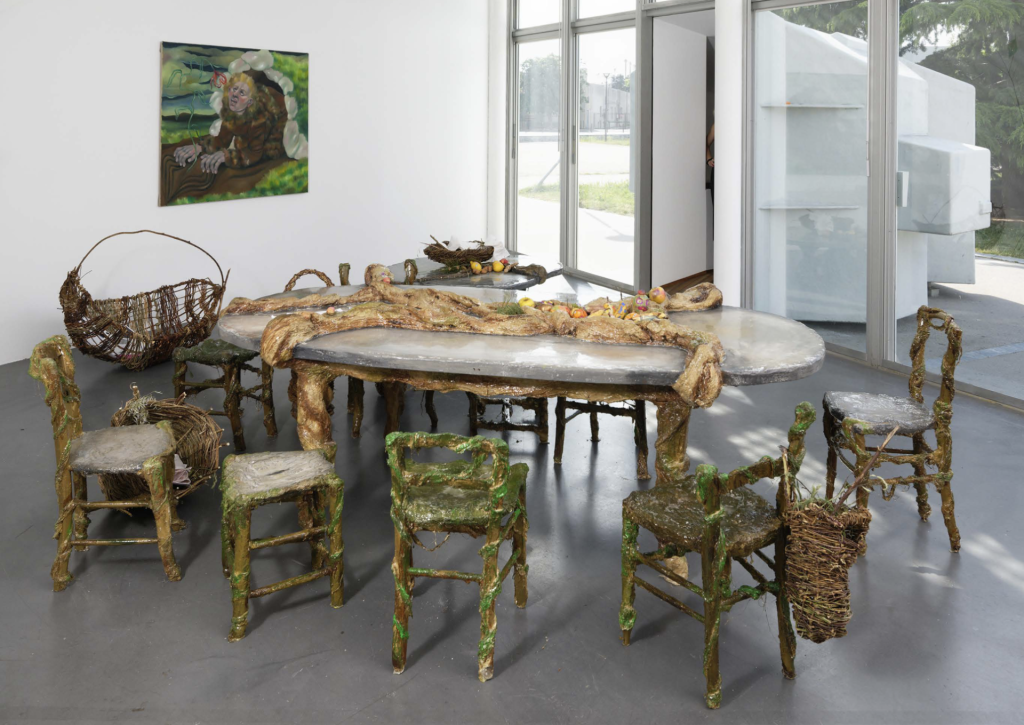
The‘amusement parks and escape games
“The moment you cross the threshold of an amusement park, you enter a totally immersive universe, where everything has been thought out to provide an experience. I used to work in a game space, creating the sets, and that’s when I understood the importance of these details: everything must serve to guide the experience, intrigue and maintain the feeling of immersion. In my installations, I use visual effects, textures and shiny elements to draw visitors’ attention to specific details. Shiny resin, for example, adds both a tactile dimension and an implicit visual cue: it suggests that there’s something important to discover here.
Basically, what I’m looking for is to create a physical immersion within a story. Not through the use of technology, but through tangible, sensory elements: sculpture, set, image and sound. I want viewers to feel a direct connection with the space and the elements that surround it. It is within this interaction, between the physical and the imaginary, between what we perceive and what we imagine, that lies the possibility of total immersion.”

Pop Culture and Internet Culture
“These cultures interest me because they function as prisms through which social phenomena are digested, transformed and reinterpreted. I love their ability to integrate the chaos of the world and make it accessible. It’s a way of apprehending the tensions of our times and grasping them in a new way. I also like to incorporate popular references directly into my work, as if to counterbalance the seriousness of the stories I tell. Some of my installations borrow their names from Buffy episode titles, such as Never Kill a boy on the first date (2021) or Once More with feeling (2020). I Wish you well in hell… (2023) refers to a Cardi B punchline. These winks may seem anecdotal, but they add nuance to the work for those who will recognize the reference or catch the joke.”
